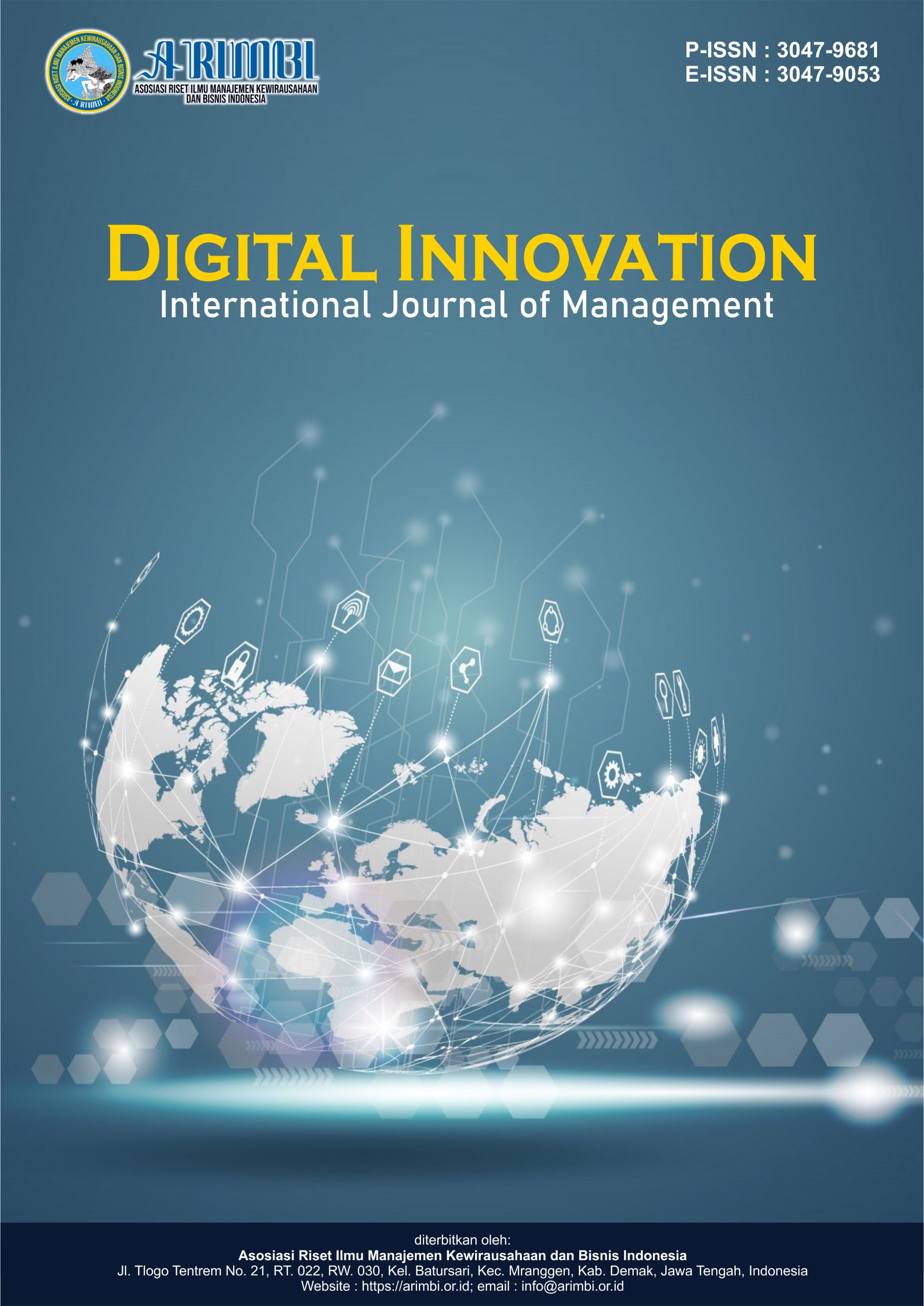The Role of BRICS Countries in Global Cooperation and Contribution to World Economic Stability
DOI:
https://doi.org/10.61132/digitalinnovation.v2i4.542Keywords:
BRICS, Global Economic Stability, International Cooperation, New Development Bank, World Economic StabilityAbstract
This study examines the role of BRICS—an intergovernmental organization consisting of Brazil, Russia, India, China, and South Africa—in fostering global cooperation and contributing to world economic stability. BRICS was founded as a strategic response to the dominance of Western financial institutions such as the International Monetary Fund (IMF) and the World Bank, which have long been criticized for their unequal representation and decision-making processes favoring developed economies. In this context, BRICS provides an alternative financial architecture through the creation of the New Development Bank (NDB) and the Contingent Reserve Arrangement (CRA), both of which serve as instruments to support development financing and ensure financial security for its members. Grounded in the frameworks of constructivism and soft power diplomacy, BRICS emphasizes the principles of equality, mutual respect, sustainable development, and South-South cooperation. These values are reflected in its policies and initiatives that prioritize inclusivity, fair participation, and collective growth, especially for developing nations often marginalized in the global economic order. By representing more than 40% of the world’s population and contributing approximately 23% of global GDP, BRICS demonstrates its capacity to shape the international system and establish a more balanced distribution of power and resources. This research employs a qualitative descriptive approach based on secondary data, which is analyzed narratively to highlight the evolving dynamics of BRICS within the global economy. The findings indicate that BRICS has significant potential to challenge Western economic hegemony, enhance economic solidarity among emerging markets, and provide developing countries with greater opportunities for growth and cooperation. Ultimately, BRICS emerges not only as a counterweight to established global institutions but also as a transformative actor capable of reshaping the trajectory of international economic governance in the future.
Downloads
References
Abir, S. I., Al Shiam, S. A., Zakaria, R. M., Shimanto, A. H., Arefeen, S. S., Dolon, M. S. A., ... & Shoha, S. (2024). Penggunaan presisi berbasis AI dalam model pembelajaran mesin untuk peramalan nilai tukar mata uang real-time di negara-negara BRICS. Journal of Economics, Finance and Accounting Studies, 6(6), 66–83. https://doi.org/10.32996/jefas.2024.6.6.6
Alamsyah, A. A. (2023). Peran Cina dalam mengoptimalkan kerjasama ekonomi BRICS untuk mencapai tujuan pembangunan bersama. Jurnal Perdagangan Internasional, 1–16. https://doi.org/10.33197/jpi.v1i1.1082
Andrew, A. A., Adebayo, T. S., & Lasisi, T. T. (2024). Moderating roles of technological innovation and economic complexity in financial development–environmental quality nexus of the BRICS economies. Technology in Society, 78, 102581. https://doi.org/10.1016/j.techsoc.2024.102581
Ayoub, A., Wani, T. A., & Sultan, A. (2024). External debt crisis and socio-economic fallout: Evidence from the BRICS Nations. Resources Policy, 1–10. https://doi.org/10.1016/j.rspp.2024.100029
Di Gong, Xu, J., & Yan, J. (2023). National development banks and loan contract terms: Evidence from syndicated loans. Journal of International Money and Finance, 134, 102763. https://doi.org/10.1016/j.jimonfin.2022.102763
Ganda, F. (2022). The relationship between financial development, natural resource rents, technological innovation, foreign direct investment, energy consumption, human capital, and trade on environmental degradation in the new BRICS countries. Environmental Science and Pollution Research, 29(49), 74442–74457. https://doi.org/10.1007/s11356-022-21244-3
Ganda, F. (2024). Gender empowerment and environmental impact: A quantile regression analysis in BRICS economies. Heliyon, 10(e40056), 1–18. https://doi.org/10.1016/j.heliyon.2024.e40056
Humpe, A., McMillan, D. G., & Schöttl, A. (2025). Macroeconomic determinants of the stock market: A comparative study of Anglosphere and BRICS. Finance Research Letters, 1–8. https://doi.org/10.1016/j.frl.2025.106869
Junior, P. O., Anokye, M., Asafo-Adjei, E., Boateng, E., Hamidu, Z., & Awotwe, E. (2021). Time-frequency domain analysis of investor fear and expectations in stock markets of BRIC economies. Heliyon, 7(10), e08000. https://doi.org/10.1016/j.heliyon.2021.e08000
Malik, A., & Sah, A. N. (2023). Does FDI impact economic growth of BRICS nations? Evidence from Bayesian VAR. Journal of Risk and Financial Management, 17(1), 10. https://doi.org/10.3390/jrfm17010010
Mohammed, S. (2024). BRICS Plus: De-dollarization and global power shifts in new economic landscape. BRICS Journal of Economics, 1–21.
Mulibana, L., & Tshikovhi, N. (2024). Rural entrepreneurship and innovation in BRICS economies: Secondary evidence from rural areas in South Africa. Sustainability, 16(6), 2408. https://doi.org/10.3390/su16062408
Ncwadi, M. R. (2024). BRICS economic integration: Prospects and challenges. South African Journal of International Affairs, 1–17. https://doi.org/10.1080/10220461.2024.2290135
Ogwu, S. O., Chukwuemeka, V. O., & Agan, B. (2025). The role of debt burden, green financing, and energy efficiency in reducing carbon footprints in MINT and BRICS economies: New evidence from panel QARDL method. Sustainable Finance and Investment Review, 1–15. https://doi.org/10.1016/j.sftr.2024.100417
Ojekemi, O. S., Ağa, M., & Magazzino, C. (2023). Toward achieving sustainability in BRICS nations: The role of renewable energy consumption and economic risk. Energies, 16(14), 5287. https://doi.org/10.3390/en16145287
Quintella, C., Rodrigues, P., Souza, E.-d., Carvalho, E., Nicoleti, J. L., & Hanna, S. A. (2025). Integration of EOR/IOR and environmental technologies in BRICS and non-BRICS: A patent-based critical review. Energy Reports, 11, 1427–1438. https://doi.org/10.1016/j.egyr.2024.11.081
Ranganai Matenda, F., & Sibanda, M. (2023). The impact of entrepreneurship on economic growth in BRICS countries. Economic Research-Ekonomska Istraživanja, 36(3), 1–14. https://doi.org/10.1080/1331677X.2023.2275582
Udeagha, M. C., & Muchapondwa, E. (2023). Striving to achieve the United Nations’ Sustainable Development Goals (SDGs) in BRICS countries: The role of green finance, financial technology, and natural resource rents. Sustainable Development, 31(5), 3657–3672. https://doi.org/10.1002/sd.2543
Yan, C., Ahmed, S., & Solangi, Y. A. (2024). The nexus between foreign direct investment, economic progress, and quality of institutions in fostering sustainable energy efficiency: Evidence from BRICS economies. Heliyon, 10(e34222), 1–15. https://doi.org/10.1016/j.heliyon.2024.e34222
Yeboah, S. D., Gatsi, J. G., Appiah, M. O., & Fumey, M. P. (2024). Examining drivers of inclusive growth: A study of economic performance, environmental sustainability, and life expectancy in BRICS countries. Research in Globalization, 9, 100267. https://doi.org/10.1016/j.resglo.2024.100267
Downloads
Published
How to Cite
Issue
Section
License
Copyright (c) 2025 Digital Innovation : International Journal of Management

This work is licensed under a Creative Commons Attribution-ShareAlike 4.0 International License.




